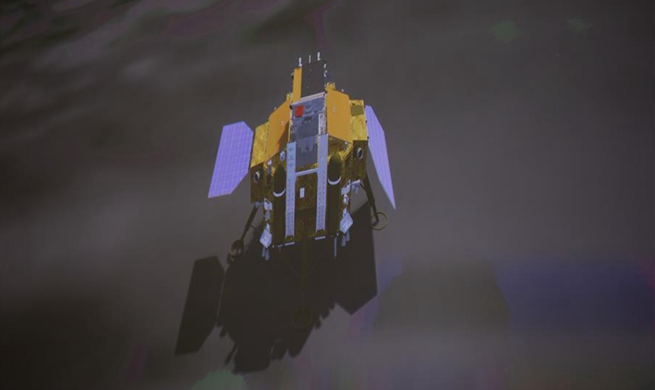CHICAGO, Jan. 3 (Xinhua) -- A team of neuroscientists and engineers has developed a soft, implantable device that can detect over-activity in the bladder and then use light from tiny, bio-integrated LEDs to tamp down the urge to urinate.
In a minor surgical procedure, the researchers implant a soft, stretchy belt-like device around the bladder. The researchers also inject proteins called opsins into the animals' bladders. The opsins are carried by a virus that binds to nerve cells in the bladder, making those cells sensitive to light signals. This allows the researchers to use optogenetics, the use of light to control cell behavior in living tissue, to activate those cells.
Using blue-tooth communication to signal an external hand-held device, the scientists can read information in real time; and using a simple algorithm, they detect when the bladder is full, when the animal has emptied its bladder, and when bladder emptying is occurring too frequently.
"When the bladder is emptying too often, the external device sends a signal that activates micro-LEDs on the bladder band device, and the lights then shine on sensory neurons in the bladder. This reduces the activity of the sensory neurons and restores normal bladder function," said Robert W. Gereau IV, a professor of anesthesiology at Washington University School of Medicine, and one of the study's senior investigators.
The researchers believe a similar strategy could work in people. They expect to test similar devices in larger animals. They also believe the strategy could be used in other parts of the body, say treating chronic pain, or using light to stimulate cells in the pancreas to secrete insulin.
But, one hurdle involves the viruses used to get light-sensitive proteins to bind to cells in organs.
"We don't yet know whether we can achieve stable expression of the opsins using the viral approach and, more importantly, whether this will be safe over the long term," Gereau said.
The new strategy was published on Jan. 2 in the journal Nature.

















